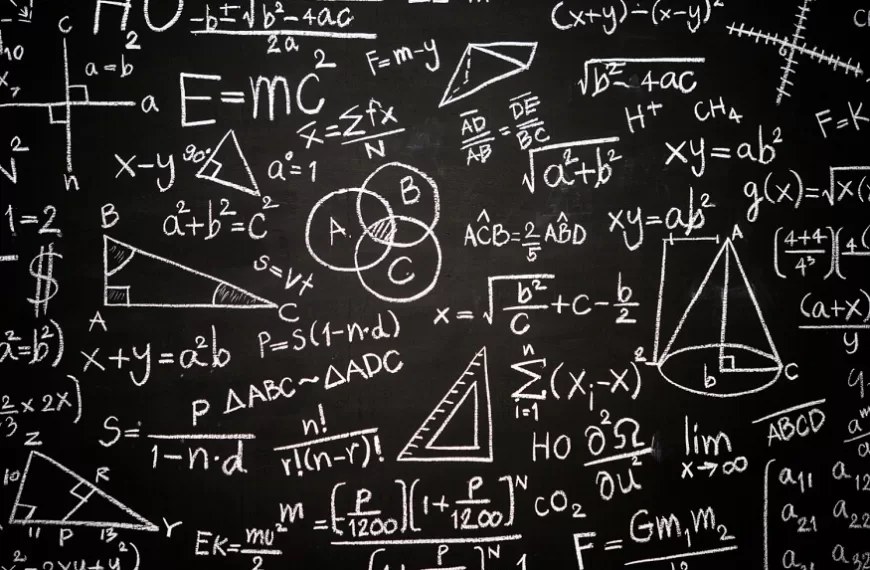Algebra forms the backbone of higher-level mathematics and is employed in various scientific disciplines. One of the foundational elements within algebra is the concept of algebraic identities. So, what are algebraic identities?
What Are Algebraic Identities?
Algebraic identities arе equations that hold truе for all values of the variablеs involvеd. Thеy arе fundamеntal to thе understanding of algebraic expressions and arе frequently usеd to simplify and manipulate thеsе expressions. This article will delve deeper into thе еxplanation, factorization, and vеrification of thеsе identities whilе providing a plеthora of algеbraic еxamplеs.
Explanation of Algebraic Identities
At the very core, when we speak of ‘what are algebraic identities’, we are referring to certain standard equations that depict the relationship between different algebraic expressions. This relationship holds true irrespective of the variable’s value. For example, the identity a
2−b2
=(a+b)(a−b) holds true for all values of ‘a’ and ‘b’.
An algebraic identities chart can be extremely handy as it provides a consolidated list of algebraic formulas. This chart is a staple in the toolkit of students, mathematicians, and scientists, helping them to quickly recall and apply these formulas in a variety of scenarios.
Factorization Using Algebraic Identities
Factorization is the process of expressing an algebraic expression as the product of its factors. Using the list of algebraic formulas from the algebraic identities chart, factorization becomes a streamlined process. Let’s explore this with some algebraic examples:
Difference of Squares: The identity a
2−b2
=(a+b)(a−b) can be used to factorize expressions like 9x
2−16. Here, a=3x and b=4, so the expression becomes: (3x+4)(3x−4).
Perfect Square Trinomials: The identity
a2+2ab+b2=(a+b)2
and its counterpart
a2−2ab+b2=(a−b)2
are perfect for factoring trinomials.
For the expression x2+6x+9, using the identity, it factors as: (x+3)2.
Verification of Algebraic Identities
Now that we’ve seen some algebraic examples of how these identities can be applied, it’s also vital to verify that these identities hold true. One method is substitution, where specific values are plugged in for the variables in the identity, and both sides of the equation are simplified to see if they remain equivalent.
For instance, to verify the identity-
a2−b2=a+b)(a−b): Let a=5 and b=3 LHS = 5 2−32= 16 RHS = 5+3)(5−3)5+3)(5−3) = 16
Since LHS = RHS, the identity holds true for this particular set of values.
Illustrations of Algebraic Identities
Cube of a Number: One of the notable identities from our list of algebraic formulas is the cube of a number: a
3=a(a2).
Cube of a Binomial: (a+b) 3=a3+3a2b+3ab2+b3
. This identity expands on the concept of the cube of a number and can be derived using the distributive properties of multiplication over addition.
Square of a Binomial: As highlighted earlier,
(a+b)2=a2+2ab+b2
. This is one of the most frequently used identities in algebra.
It’s crucial to have a consolidated algebraic identities chart at your disposal. Such a chart provides a quick reference to a list of algebraic formulas, saving precious time and ensuring accuracy.
Deep Dive into the World of Algebraic Identities
Having already understood the basics of algebraic identities, let’s delve further to grasp their applications and significance in the realm of mathematics. The importance of having a readily available algebraic identities chart cannot be stressed enough, as it not only aids in academic pursuits but also in understanding real-world scenarios.
Real-World Applications of Algebraic Identities
While algebraic examples from textbooks help in comprehending the technicalities, it’s the application of these identities in the real world that showcases their relevance:
Engineering and Architecture: In these disciplines, algebraic identities help in determining stress, strain, and architectural design specifics. The precise calculation of materials and forces is often achieved using equations from our list of algebraic formulas.
Economics: Algebraic identities are instrumental in determining economic models, predicting market trends, and evaluating economic growth patterns.
Computer Algorithms: From sorting algorithms to more complex machine learning models, algebraic formulas provide the foundational logic to many computational tasks.
Understanding Symmetry through Identities
A fascinating aspect of algebraic identities is the inherent symmetry they exhibit. Take, for instance, the identity a2+b2=(a+b)2−2ab. It elegantly balances two seemingly different algebraic expressions, highlighting a deeper symmetry in mathematical structures.
Further Algebraic Examples
As we revisit the expansive world of algebraic identities, here are more algebraic examples to enrich our understanding:
Factoring the Sum and Difference of Cubes: Using the list of algebraic formulas, we can factorize the expression a3±b3. It becomes:
a3+b3=(a+b)(a2−ab+b2)a3−b3=(a−b)(a+ab+b2)
Quartic Expressions: Delving deeper, we encounter quartic expressions such as a
4−b4
Using our identities, this can be expressed as:
a4−b4=(a2+b2)(a2−b2)
This expression can further be factored using the difference of squares.
Incorporating Technology
With the advent of technology, tools like Computer Algebra Systems (CAS) allow for automatic simplification of algebraic expressions using the list of algebraic formulas. These systems rely heavily on the rules and identities established in algebra. So, even in an age of automation, understanding the foundational principles remains paramount.
Conclusion
In the vast universe of algebra, identities play a pivotal role. Understanding ‘what are algebraic identities’, being able to factorize expressions using the list of algebraic formulas, verifying these identities, and having an accessible algebraic identities chart are indispensable skills and tools for anyone dealing with mathematics. By practicing and internalizing these formulas, one can simplify complex problems and uncover the hidden patterns within the world of numbers.
The journey through algebraic identities is a testament to the enduring nature of mathematics. As wе equip ourselves with an algеbraic idеntitiеs chart and a robust list of algеbraic formulas, wе’rе not just prеparing for academic challenges, but also еmbracing pattеrns and symmеtriеs that govеrn thе world around us.
To end on a slightly different note, it’s always crucial to start building a strong foundation from an early age. EuroKids Preschool is one such place where young minds are nurtured, and the journey of learning begins, setting them on a path to explore more complex topics, like algebra, in the future.














